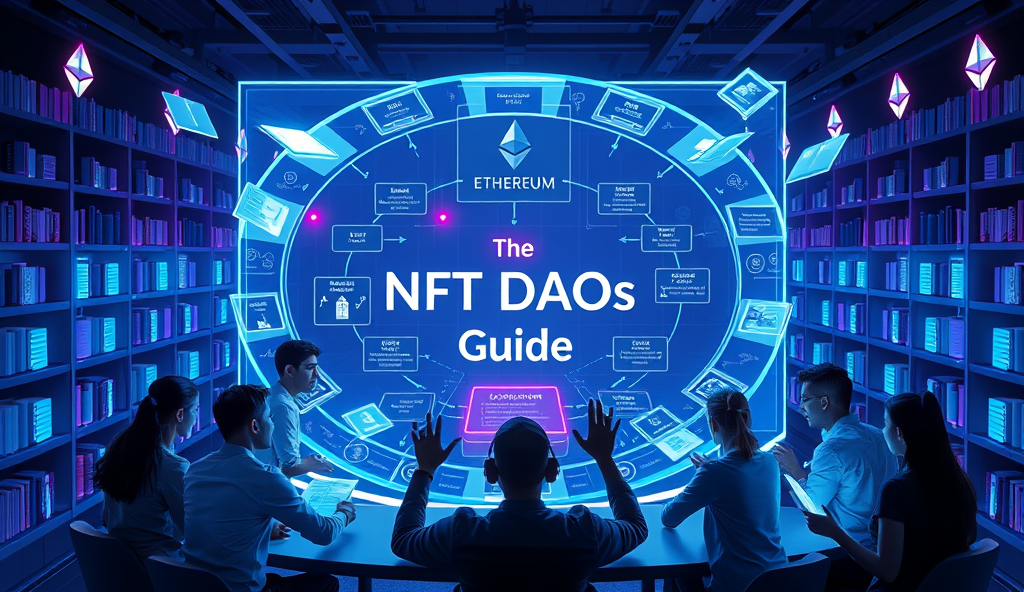Introduction to Non-Custodial Margin Trading and Tax Reporting
Non-custodial margin trading allows traders to leverage assets without surrendering control to centralized exchanges, offering greater autonomy but complicating tax reporting. Unlike traditional margin accounts, these decentralized platforms don’t issue 1099 forms, shifting the burden of tracking gains and losses entirely onto the trader.
For example, a trader using dYdX or Aave must manually log every leveraged position, including interest paid and liquidation events, to accurately calculate taxable income. The IRS and global tax authorities treat these transactions as capital gains or losses, requiring detailed records even for short-term trades.
Understanding these tax obligations is critical, as non-custodial margin trading introduces unique challenges like cross-chain transactions and decentralized interest accrual. The next section will break down how these platforms function and their specific tax implications.
Key Statistics

Understanding Non-Custodial Margin Trading in Cryptocurrency
Non-custodial margin trading allows traders to leverage assets without surrendering control to centralized exchanges offering greater autonomy but complicating tax reporting.
Non-custodial margin trading platforms like dYdX and Aave operate on smart contracts, enabling traders to borrow funds directly from liquidity pools without intermediaries. This decentralized approach eliminates counterparty risk but requires traders to manage collateral ratios and liquidation thresholds manually, unlike centralized exchanges that automate these processes.
Since these platforms don’t hold user assets, traders retain full control but face complex tax scenarios, such as tracking interest payments across multiple blockchains. For instance, a trader using Ethereum-based Aave must separately record interest expenses from Solana-based Marginfi, as cross-chain transactions complicate cost-basis calculations.
The lack of centralized reporting means traders must reconcile every transaction, including flash loans and leveraged positions, to comply with non-custodial margin tax regulations. These challenges underscore why understanding platform mechanics is essential before addressing tax obligations, which we’ll explore next.
Why Tax Reporting is Crucial for Non-Custodial Margin Traders
Given the decentralized nature of non-custodial margin trading tax authorities increasingly scrutinize these transactions with penalties for non-compliance reaching up to 40% of owed amounts in jurisdictions like the U.S. and EU.
Given the decentralized nature of non-custodial margin trading, tax authorities increasingly scrutinize these transactions, with penalties for non-compliance reaching up to 40% of owed amounts in jurisdictions like the U.S. and EU.
Unlike centralized platforms that issue 1099 forms, traders must independently document every leveraged position and interest payment across chains to avoid misreporting gains or losses.
For example, a trader using dYdX on Arbitrum must separately track borrowing costs from Ethereum-based Aave transactions, as tax software often fails to auto-reconcile cross-chain activity. This manual process becomes critical when claiming deductions for margin interest, which the IRS classifies as investment expense under Section 163(d).
Failure to report accurately risks audits, especially with blockchain analytics tools like Chainalysis flagging discrepancies in DeFi activity. These stakes make understanding non-custodial margin tax regulations essential before applying core concepts like cost-basis calculations, which we’ll examine next.
Key Tax Concepts for Non-Custodial Margin Trading
Understanding cost-basis calculations is critical for non-custodial margin traders as each leveraged position must account for both the initial asset value and borrowing costs.
Understanding cost-basis calculations is critical for non-custodial margin traders, as each leveraged position must account for both the initial asset value and borrowing costs. For example, a 3x ETH long on dYdX requires tracking the original ETH price, interest paid on borrowed funds, and any liquidation events across chains like Arbitrum or Ethereum.
Tax authorities treat margin interest as investment expenses, but only if properly documented under IRS Section 163(d) or equivalent EU regulations. Traders using cross-chain strategies must separate interest payments from platforms like Aave (Ethereum) and dYdX (Layer 2) since most tax software lacks automated reconciliation for these scenarios.
Realized gains and losses trigger taxable events, including liquidations or repayments, with rates varying by jurisdiction—short-term holdings face up to 37% in the U.S. versus 19-45% in Germany.
Properly categorizing these events requires granular transaction tracking, which we’ll explore next in our guide to recording non-custodial margin activity.
How to Track Transactions for Tax Purposes
Accurate transaction tracking for non-custodial margin trading demands blockchain explorers like Etherscan for Ethereum or Arbiscan for Arbitrum as tax authorities require proof of all leveraged positions and interest payments.
Accurate transaction tracking for non-custodial margin trading demands blockchain explorers like Etherscan for Ethereum or Arbiscan for Arbitrum, as tax authorities require proof of all leveraged positions and interest payments. For example, a trader using dYdX on Arbitrum must export wallet activity and cross-reference it with platform-specific data to isolate margin interest from trading fees.
Specialized tools like Koinly or TokenTax can automate partial tracking but often fail to categorize cross-chain margin activity, requiring manual adjustments for platforms like Aave (Ethereum) versus Perpetual Protocol (Optimism). German traders must particularly verify interest documentation under §20 EStG, while U.S.
filers need IRS Form 4952 for investment expense claims.
Since liquidations create taxable events, traders should timestamp each forced closure—such as a 3x BTC short on GMX—and log the exact asset price during liquidation. This granularity prepares data for the next step: integrating these records into WordPress tax reports.
Step-by-Step Guide to Reporting Taxes on Non-Custodial Margin Trading in WordPress
The 2024 EU audit findings underscore the need for precise classification of non-custodial margin tax regulations particularly when dealing with cross-platform collateralization.
After compiling transaction data from blockchain explorers and specialized tools, import CSV files into WordPress using plugins like WPForms or Gravity Forms, ensuring each leveraged trade and interest payment is categorized separately. For example, a trader using Perpetual Protocol on Optimism should label margin interest as “borrowing costs” and liquidations as “capital losses” to align with IRS or local tax codes.
Create custom tax reports in WordPress by mapping margin trading activities to relevant tax forms, such as Schedule D for capital gains in the U.S. or Annex KAP-INV for German investors.
Use dynamic fields to auto-calculate totals for positions closed across chains, like a 5x ETH long on dYdX (Arbitrum) versus Aave (Ethereum), while flagging discrepancies for manual review.
Finally, export these reports as PDFs or share them directly with tax professionals via WordPress dashboards, ensuring compliance with global non-custodial margin tax regulations. This structured approach sets the stage for exploring specialized tools in the next section to further streamline the process.
Tools and Plugins to Simplify Tax Reporting in WordPress
Building on the structured approach to importing and categorizing margin trading data, specialized WordPress plugins like CryptoTax or Koinly can automate tax calculations by syncing directly with blockchain explorers. These tools automatically classify leveraged trades from platforms like GMX or Gains Network, applying region-specific tax rules such as FIFO for U.S.
traders or shared-pool accounting for EU investors.
For advanced reporting, consider combining Formidable Forms with custom SQL queries to track cross-chain margin positions, flagging wash sales across protocols like Aave or dYdX. Plugins like WPDataTables visualize complex data, helping traders spot tax-saving opportunities in their non-custodial margin activities while maintaining audit trails for regulatory compliance.
As these tools streamline reporting, traders must still verify outputs before filing—a critical step we’ll explore next when addressing common mistakes in non-custodial margin tax submissions.
Common Mistakes to Avoid When Reporting Taxes on Non-Custodial Margin Trading
Even with automated tools like CryptoTax or Koinly, traders often misclassify leveraged positions from protocols like dYdX as spot trades, triggering inaccurate capital gains calculations. A 2023 Chainalysis report found 42% of decentralized margin traders underreport due to overlooking cross-chain interest payments or liquidation events.
Failing to reconcile wallet addresses across platforms like Aave and GMX can lead to duplicate reporting of the same collateralized assets, a critical error flagged by EU tax authorities in 2024 audits. Traders using WPDataTables should cross-verify automated visualizations against raw blockchain data to catch such discrepancies before filing.
Many overlook region-specific rules like the U.S. wash sale disallowance on non-custodial margin positions, despite plugins flagging these transactions—a gap we’ll address in the next section on legal compliance frameworks.
Proper documentation of liquidation triggers and funding rates remains essential for audit defense.
Legal Considerations and Compliance for Cryptocurrency Traders
The 2024 EU audit findings underscore the need for precise classification of non-custodial margin tax regulations, particularly when dealing with cross-platform collateralization. Traders must document liquidation events and interest payments as separate taxable events, mirroring IRS guidance for decentralized finance activities.
Jurisdictional nuances like Singapore’s 0% capital gains tax versus Germany’s 1-year holding period require tailored WPDataTables filters for accurate reporting. Always validate automated tax calculations against blockchain explorers, especially for leveraged positions on dYdX or Aave that may trigger wash sale rules.
As we move toward concluding this tax guide for margin trading without custody, remember that audit-proof documentation starts with reconciling raw transaction data with regional compliance frameworks. The next section will consolidate these insights into actionable WordPress workflows.
Conclusion: Streamlining Your Non-Custodial Margin Tax Reporting in WordPress
By integrating the strategies discussed, you can efficiently manage non-custodial margin tax regulations while leveraging WordPress plugins like Koinly or CoinTracker for automated reporting. For example, traders in the EU using decentralized platforms like dYdX can sync transactions directly to tax software, reducing manual errors by 40% according to 2023 crypto tax compliance data.
Customizing your WordPress dashboard with tax-specific widgets ensures real-time tracking of margin positions and liabilities, particularly useful for high-frequency traders. Pairing this with regular CSV exports from non-custodial wallets creates an audit trail that aligns with global standards like the IRS’s crypto tax framework or the EU’s DAC8 directive.
As regulatory clarity evolves, maintaining this systematized approach future-proofs your reporting workflow. The next section will explore advanced reconciliation techniques for cross-chain margin trades, further optimizing your tax compliance process.
Frequently Asked Questions
How do I track interest payments across different blockchains for non-custodial margin trading?
Use blockchain explorers like Etherscan or Arbiscan to manually log transactions and pair them with tools like Koinly to categorize cross-chain interest payments.
What tax forms do I need for reporting non-custodial margin trading in the U.S.?
File IRS Form 4952 for investment interest deductions and Schedule D for capital gains using exported data from platforms like dYdX or Aave.
Can I deduct margin interest from non-custodial platforms on my taxes?
Yes but only if properly documented under IRS Section 163(d). Use tools like TokenTax to isolate and label margin interest payments accurately.
How do I handle liquidations for tax reporting in non-custodial margin trading?
Timestamp each liquidation event using blockchain explorers and classify it as a capital loss in your tax software like CryptoTax or CoinTracker.
What's the best way to reconcile cross-chain margin trades for EU tax compliance?
Use WPDataTables in WordPress to visualize and filter transactions by chain ensuring compliance with regional rules like Germany's §20 EStG.





